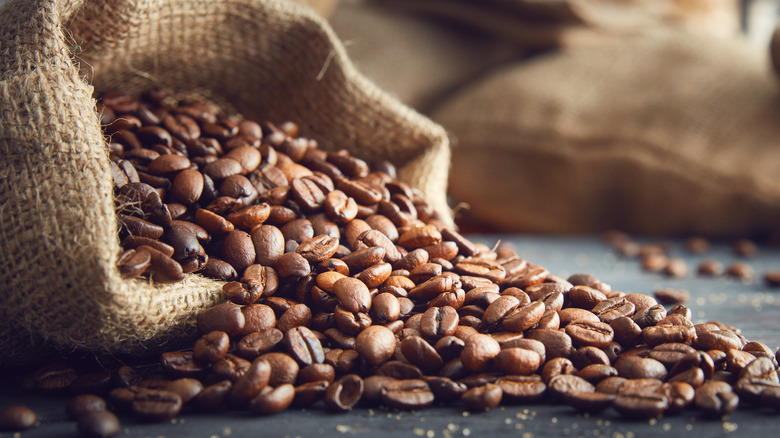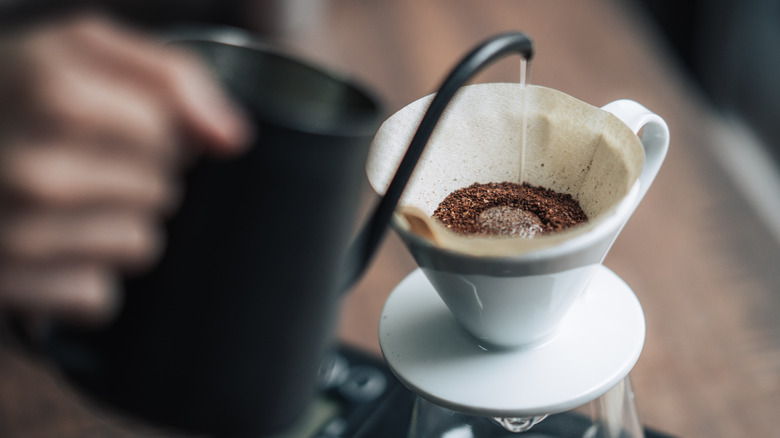The Best Type Of Coffee Beans To Use For Pour-Overs
Considering that the process of making coffee only involves two ingredients — water and ground roasted coffee beans — there sure are a lot of methods for achieving the final product. Forget about drip machines (or French presses, stovetop percolators, vacuum siphons, cold brewing, and espresso machines), there's one simple, manual approach to making coffee that ends up at the top of many aficionado's lists for producing the perfect cup: pour-over coffee.
The pour-over method involves simply pouring hot water over coffee grounds in a filter, with time and gravity taking care of the rest. This infusion method is best for bringing out the nuanced flavors of your brew; that's why people who love single-origin beans make pour-overs on the regular. What type of beans works best for pour-over coffee? The short answer is brightly flavored, single-origin beans.
But, there is literally a world of beans out there. There are many rewards to be gained through experimentation with coffee grown in different countries, but in general African beans will give you a reliably clean, bright cup of pour-over coffee. Look for Ethiopian Yirgacheffe, Kenya Peaberry, or Burundi Kavugangoma for acidic brightness balanced with floral and fruity flavors. Once you've found your favorite bean, it's time to think about its roast and the grind.
Medium in all things pour-over
There are sixteen different types of coffee roasts, but we need only concern ourselves with the four fundamentals: light, medium, medium-dark, and dark. For the pour-over method, we recommend using light or medium-roasted beans, which preserves the intricate flavors in the coffee without the smoky, caramelized, or even burnt qualities of darker roasts. For the best possible pour-over, buy your coffee freshly roasted — within a few days, if possible — and grind the beans yourself using a burr grinder instead of a blade.
We all know espresso beans are very finely ground, but that's because the process of making the drink is relatively quick. Pour overs need more time, even though the water isn't sitting on the grounds as with a French press. To make sure your pour-over brew isn't over-extracted, use a medium-to-coarse grind. Lastly, make sure you start with cold water heated to just below boiling; a temperature of about 200 degrees Fahrenheit should do nicely. Wet the grounds, allow them to bloom, pour the hot water over them slowly ... and enjoy one of the greatest cups of coffee ever made.

